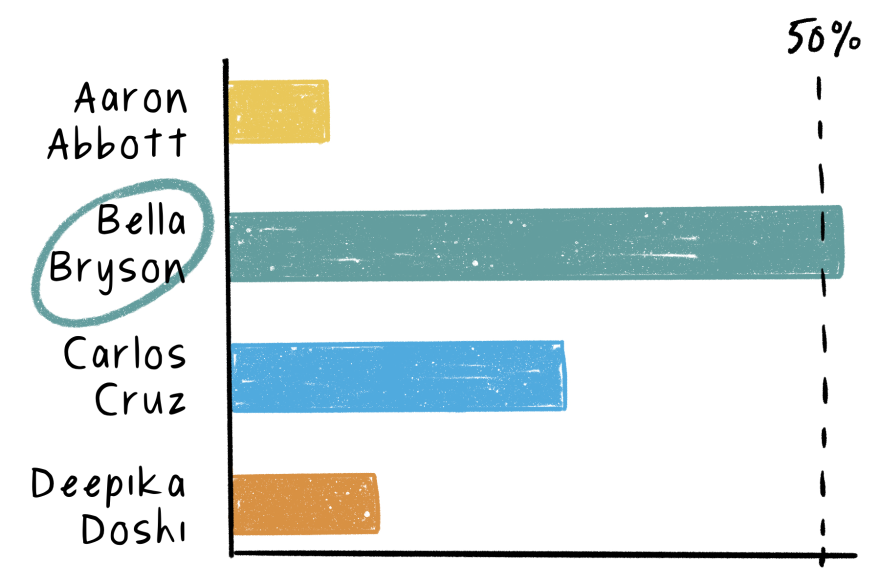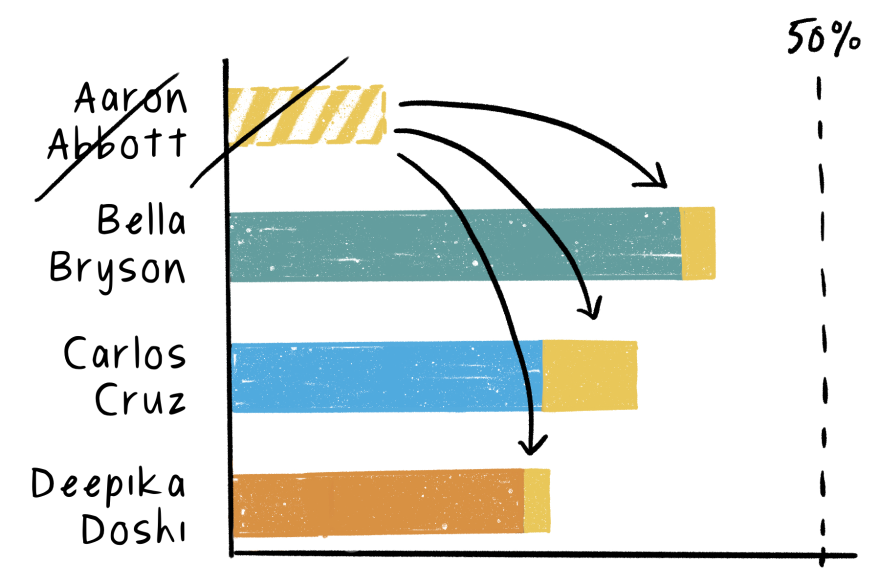In 2020, Alaskans voted to establish a ranked-choice voting system for general elections, which was implemented earlier this year. And it quickly made an impact, as Democratic Rep. Mary Peltola defeated a pair of Republicans to win a special election to fill a U.S. House seat. Similarly, in this fall's general election, since no candidate got a majority in the Senate and House races — defined as 50% plus one vote — there will be another round of counting on Wednesday.
Maine also uses a ranked-choice voting system for all primary elections and federal general elections, and Nevada voters took a first step toward establishing one.
But what does that all mean?
In ranked-choice voting systems, voters can rank multiple candidates. If a candidate gets a majority of first-preference votes, the election is over and that candidate wins.
If no one reaches 50% plus one, the candidate in last place is eliminated. Then, the next choice on that candidate's voters' ballots is reallocated and tallied. That process repeats until someone wins a majority. The number of rounds varies based on how many candidates there are and how close the election is.
The hypothetical example below walks you through a couple of scenarios — one in which a candidate wins outright, and one in which a couple of rounds of ranked-choice voting takes place.
Here's the ballot for our example:

Scenario 1
Someone gets more than 50% of the vote plus one. They win outright.

Scenario 2
No one meets the threshold. Now we go into ranked-choice voting.

The candidate with the fewest votes — Aaron Abbott — is eliminated. All their votes are redistributed to those voters' second-choice picks.
Any ballots that ranked Abbott first and didn't rank other choices become inactive or exhausted. In other words, those ballots can't be counted in future rounds because no candidate left in the contest is ranked.

Still, no one meets the threshold. So the next candidate with the fewest votes — Deepika Doshi — is eliminated and their votes are redistributed to voters' next picks.

Finally, someone meets the threshold. Carlos Cruz wins.
This can go on for multiple rounds, depending on how many candidates there are and how close the vote is.
Copyright 2023 NPR. To see more, visit https://www.npr.org. 9(MDM3NjYwMjA5MDE1MjA1MzQ1NDk1N2ZmZQ004))


